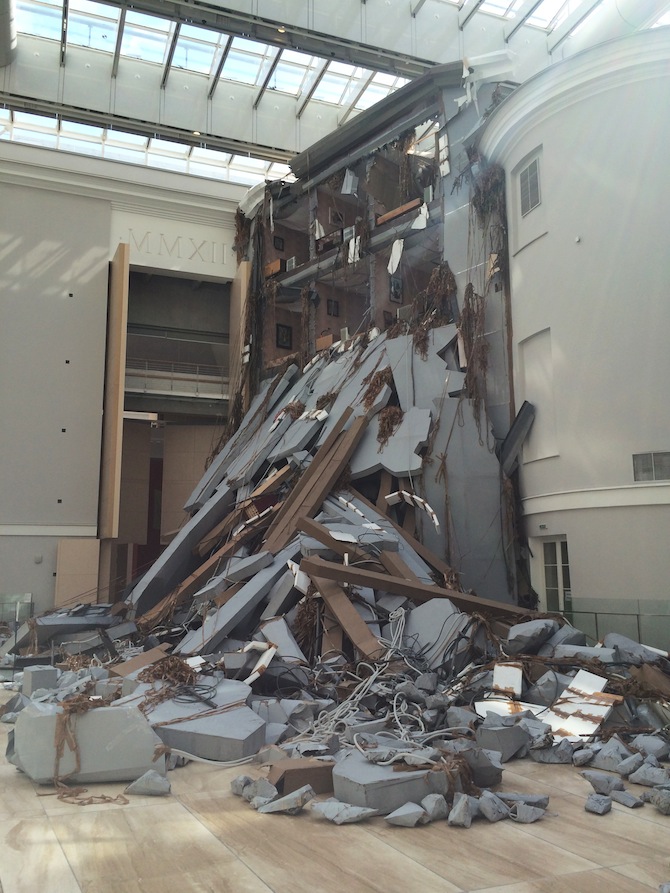

 from the top: Thomas Hirschhorn, ABSCHLAG, 2014, General Staff Building, State Hermitage Museum // Klara Lidén, Warm up: State Hermitage Museum Theater , 2014, General Staff Building, State Hermitage Museum // Marlene Dumas The Trophy, 2013, Winter Palace, State Hermitage Museum, 2014. // all installation views MANIFESTA 10, photos by Daria Kirsanova
from the top: Thomas Hirschhorn, ABSCHLAG, 2014, General Staff Building, State Hermitage Museum // Klara Lidén, Warm up: State Hermitage Museum Theater , 2014, General Staff Building, State Hermitage Museum // Marlene Dumas The Trophy, 2013, Winter Palace, State Hermitage Museum, 2014. // all installation views MANIFESTA 10, photos by Daria Kirsanova
The latest edition of Manifesta in Saint Petersburg caused a high degree of controversy, which was escalated by the Russian authorities who have certainly excelled in black PR for the event: The anti gay propaganda laws and the unstoppable campaign for the ‘traditional Orthodox values’ that was initiated by the lawmakers in the city have set an apocalyptic backdrop for the exhibition. This, combined with stiff museum policies of the State Hermitage* and an overwhelming amount of bureaucracy, created the intrigue around the exhibition. The main question was whether the show would actually take place. Meanwhile, the International media neither seemed to care about the conceptual core of the curatorial idea or the artist list, nor about the difficulties of building a contemporary art audience in Saint Petersburg – a city that is proud of being conservatively equipped with neo-classical architecture and post-imperialist nostalgic spirit.
In spite of all the difficulties Manifesta 10 opened as scheduled at the end of June. But the exhibition, which is curated by Kasper König, is probably the most unadventurous of all the editions of the biennial so far: The gentle atmosphere of the city softened the edges of the controversy, and somehow silenced uneasy questions around the socio-political context of post-post Soviet Russia.
The main biennial project is set in the General Staff building – a part of the State Hermitage that is newly refurbished to showcase modern and contemporary art. It is a selection of remarkable works and projects commissioned by Manifesta to showcase international artists, who have thoroughly engaged themselves in Russia’s history and its current situation. One of these is a project by Erik van Lieshout "The Basement" (2014): The large installation is telling the story of the famous Hermitage cats, as they have been part of the building’s staff for more then 200 years. At the same time, van Lieshout uses the portraits of the animals to play a linguistic game with the word ‘pussy’ as, for example, the word ‘riot’ is written just beneath a cat-portrait. Fantastic in effect and scale (14 meters high), Thomas Hirschhorn’s site-specific installation "ABSCHLAG" occupies the largest space in the General Stuff building: Reminiscent of communal apartments from the Soviet era, the cross-section displays a number of constructivist paintings (loaned from the State Russian Museum) by the most prominent artists of the Russian Avant-garde – which belongs to Hirschhorn’s favourite movements in art history.
The collaborative approach of St Petersburg’s museums is probably one of the most exciting aspects of this Manifesta: While a large part of the exhibition is displayed in the Winter Palace along with the museum’s collection, some of the greatest paintings by Matisse were moved to the main Manifesta space and were subsequently replaced by polarising works from Marlene Dumas and Nicole Eisenman. The museum’s staff was not particularly enthusiastic about this intrusion and disruption – they all seemed rather disturbed by Manifesta-visitors who were trying to locate the projects in the immense palatial halls. Nevertheless, this marathon through the impressive art collection of the Russian Tsars was certainly worth it. The juxtaposition of rough and seemingly unfinished concrete sculptures by Lara Favaretto suddenly appears incredibly fragile when shown next to the classical Ancient Greek versions. Likewise, Susan Philipsz’ twelve channel sound installation "The River Cycle (Neva)" (2014), which is inspired by the horrific floods that happened in Saint Petersburg in the 18th and 19th century, was added a suggestive dramatic note by being installed in the lavish neo-classical staircase next to Canova sculptures.
It was unavoidable that the projects commissioned to respond to Russian context would comment on the current political situation in the country. The crisis in the Ukraine was specifically reflected in Boris Mikhailov’s "The Theater of War, Second Act, Time Out, December 2013" – a photographic documentary series from Kiev’s Independence Square during the protests that brought down the country’s previous government. Marlene Dumas, on the other hand, dedicated her watercolour series "Great Men" (2014) to portraits of famous male writers, musicians or artists – from Gogol or Eisenstein to Diagilev – who were gay.
Ironically, the two artists who represent St Petersburg’s art scene at Manifesta – namely Timur Novikov with his delicate textile works and Vladislav Mamyshev-Monroe with his Cindy Sherman-inspired series in which he dresses up as Marilyn Monroe – were both homosexuals. Both being a part of neo-academism – one of Russia’s most important contemporary art movements formed in 1980s - 1990s in Saint Petersburg – the style was typically inspired by homoeroticism of neo-classicism and academic painting. Novikov and Mamyshev-Monroe are now deceased – as is the liberal spirit that once characterised Leningrad and later Saint Petersburg, and that shaped its vibrant underground art scene back in the days.
MANIFESTA 10
28 June – 31 October 2014
The State Hermitage Museum
St. Petersburg
Venues, tickets, opening hours: manifesta10.org
* The
State Hermitage is the name of the museum that hosts Manifesta 10. This
museum owns few different palaces and buildings in Saint Petersburg. One
of them is the General Staff Building; another one is the famous Winter
Palace – former residency of the Russian Tsars both are locations for
the main Manifesta 10 exhibition.
MANIFESTA 10
28 June – 31 October 2014
The State Hermitage Museum
St. Petersburg
Venues, tickets, opening hours: manifesta10.org
 Joseph Beuys "Wirtschaftswerte", 1980, Collection S.M.A.K., Gent, Belgium, Winter Palace, State Hermitage Museum, 2014.
Joseph Beuys "Wirtschaftswerte", 1980, Collection S.M.A.K., Gent, Belgium, Winter Palace, State Hermitage Museum, 2014.
 Vladislav Mamyshev-Monroe "Tragic Love", 1993, Courtesy of the Artist's estate.
Vladislav Mamyshev-Monroe "Tragic Love", 1993, Courtesy of the Artist's estate.
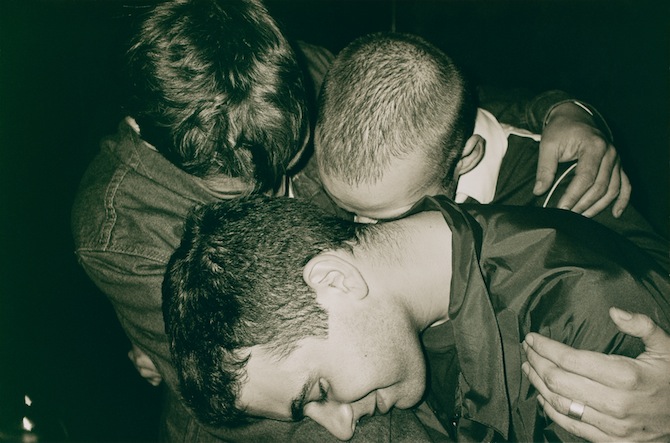 Wolfgang Tillmans "Arkadia I", 1996 © Wolfgang Tillmans
Wolfgang Tillmans "Arkadia I", 1996 © Wolfgang Tillmans
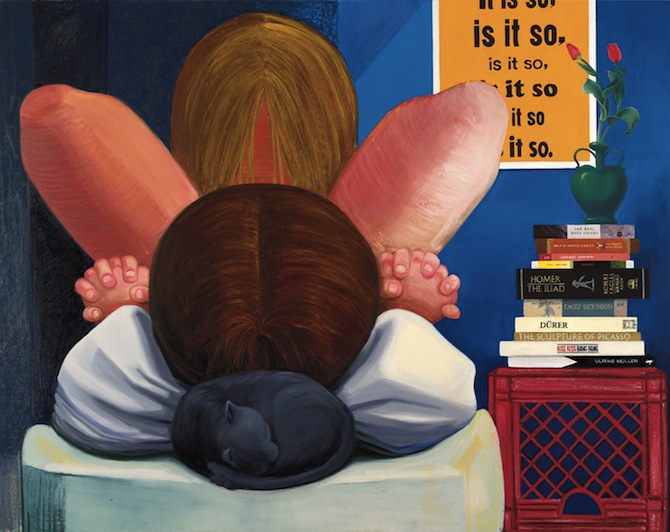 Nicole Eisenman "It is so", 2014, Courtesy of the Artist and Koenig&Clinton, New York; Galerie Barbara Weiss, Berlin; and Susanne Vielmetter Los Angeles Projects, Los Angeles. Photo credit: John Berens
Nicole Eisenman "It is so", 2014, Courtesy of the Artist and Koenig&Clinton, New York; Galerie Barbara Weiss, Berlin; and Susanne Vielmetter Los Angeles Projects, Los Angeles. Photo credit: John Berens
 Henri Matisse, General Staff Building, State Hermitage Museum, 2014
Henri Matisse, General Staff Building, State Hermitage Museum, 2014
 Lara Favaretto, Winter Palace, State Hermitage Museum, 2014.
Lara Favaretto, Winter Palace, State Hermitage Museum, 2014.
 Francis Alÿs "Lada Kopeika Project, Brussels—St. Petersburg", 2014 (Installation detail)
Francis Alÿs "Lada Kopeika Project, Brussels—St. Petersburg", 2014 (Installation detail)
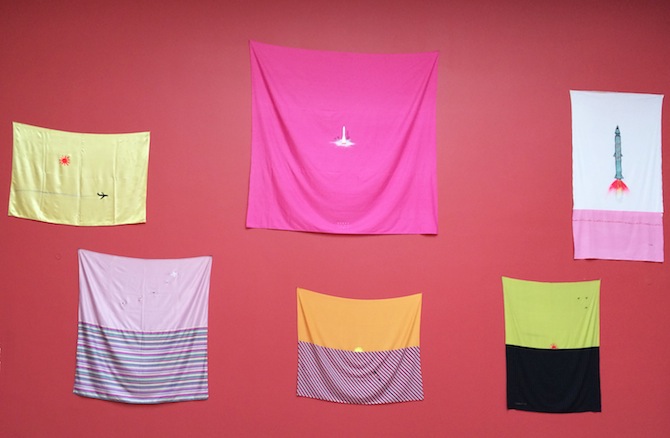 Timur Novkov, General Staff Building, State Hermitage Museum, 2014
Timur Novkov, General Staff Building, State Hermitage Museum, 2014
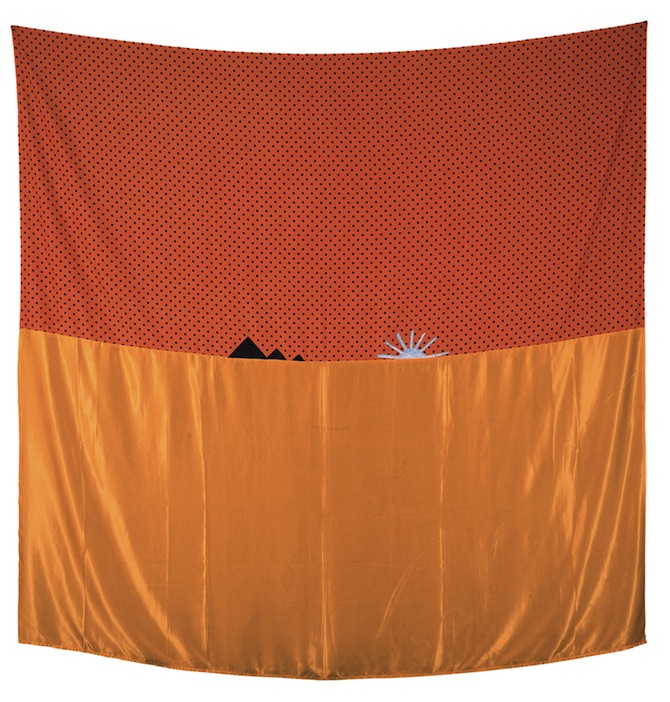 Timur Novkov "Pyramids", 1989, Courtesy of Timur Novikov's family collection.
Timur Novkov "Pyramids", 1989, Courtesy of Timur Novikov's family collection.